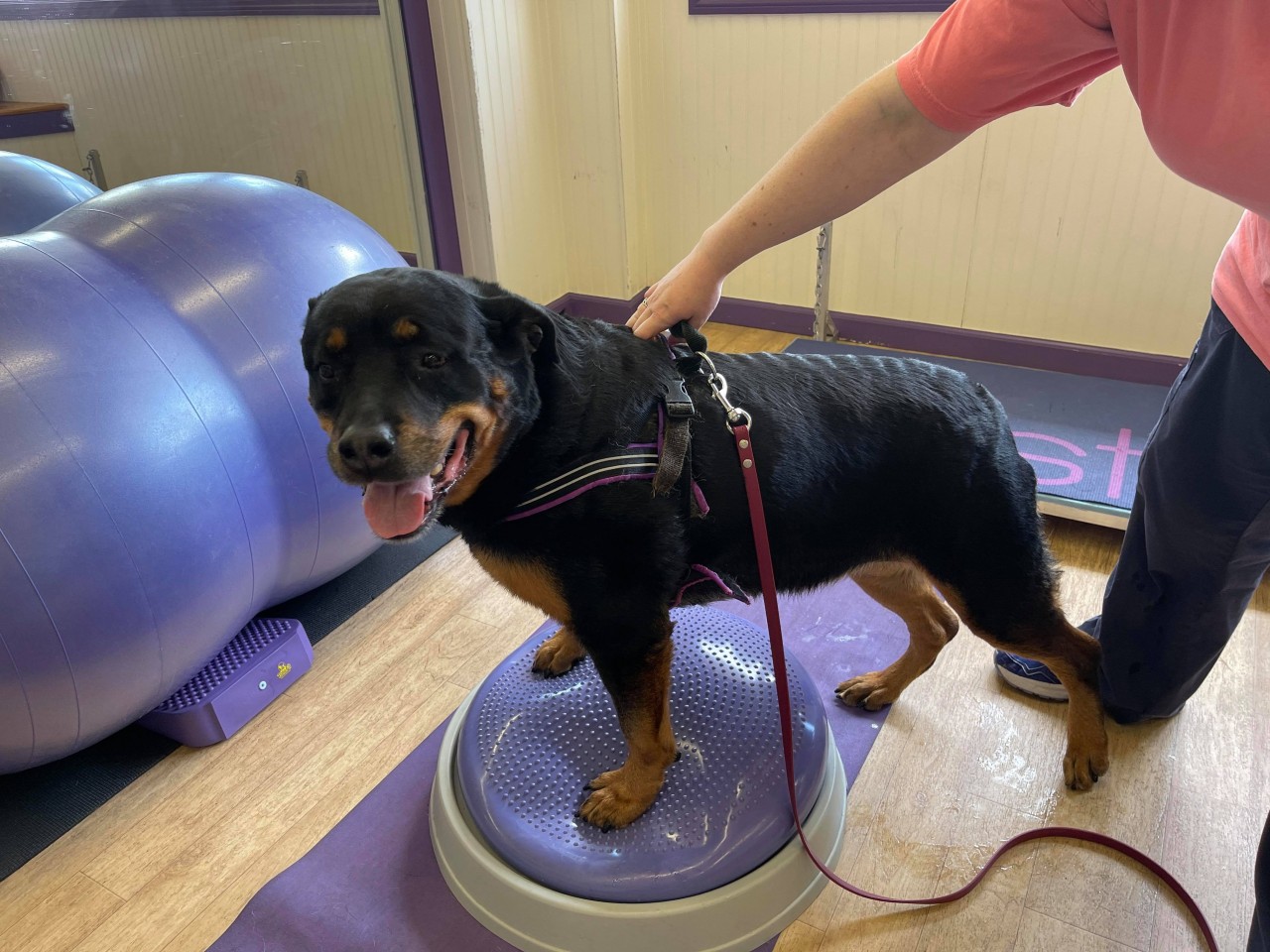Does your dog have a bum knee?
Bum Knees – no matter how you slice it – anyone involved in dogs either directly knows or has owned a dog that has had a 'bum' knee. The bum knee may be due to cranial cruciate injuries or the dreaded 'ACL', patella luxation, or a growth-related issue. Some dogs are prone to knee injuries – they may be straight in the rear, be a small breed, or a large breed with a predisposition for knee problems.
Any time there is a problem with the knee, or any joint, the process of inflammation and pain begins. This will subsequently lead to loss of strength and motion. The loss of strength and motion leads to more inflammation and pain. This cycle will lead to osteoarthritis.
Certain breeds 'high' on the list for bum knees include but are certainly not limited to Labrador retrievers, Boxers, Pit bulls and mixes, German Shepherds, Newfoundlands, Golden Retrievers, Rottweilers, and small breeds. Certain small breeds are in particular at risk for patella luxation issues. There are also certain factors that may lead to problems with knees. Currently, the pandemic has inadvertently increased the weight of many dogs in our lives and decreased the activities of many of our dogs.
Factors that increase risk of a 'bum knee'
Additional factors that may predispose a dog to a bum knee includes the following:
- Early spay/neuter
- Increased weight – this is especially true during the pandemic!
- Straight rears – either due to breed or structure
- Deconditioning – another high cause in the pandemic!
- Dogs over the age of five
Signs of a knee problem include but are not limited to:
- Intermittent or constant lameness
- Sudden intermittent loss of the ability to weight bear in the one of the back legs
- Sitting in an abnormal position – often dogs will sit in a sloppy position or kick one leg out in a kickstand position
- Not bearing weight on a hind leg – look at the toes of the feet and determine if the weight is equal
- Difficulty moving from a sitting position or lying down position
- Suddenly less active
- Reluctant to jump up into the car, couch, bed, et.
- Constant licking of the back leg
- Swelling or thickening of the knee
- A hitching or kicking of the leg
By accepting you will be accessing a service provided by a third-party external to https://www.fenzidogsportsacademy.com/
